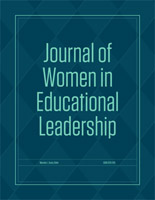Department of Educational Administration
Date of this Version
6-25-2019
Document Type
Article
Citation
Journal of Women in Educational Leadership, 2019
doi: 10.32873/unl.dc.jwel.191
Abstract
“There has to be a better way.” In 1964, Virginia Roth, then known as Sr. Pacis principal at Ryan High School in Omaha, Nebraska, set out to devise a new system of education. Her goal, as expressed in her essay, “A Model for an Alternate High School” was to, “realize those objectives we defined as essential for education.” The “we” referred to the School Sisters of St. Francis, the religious order to which she belonged at that time. Roth described the period from 1964 to 1966 as a “two year experimentation program of brainstorming, trying new methods, committee work for the whole staff, and some brainwashing to define a school organization.” The resulting system of modular scheduling, individual advising, and independent study continued for two decades before the school closed. Over time, the innovations lost favor with the community and the Catholic hierarchy in Omaha. Roth left Ryan, but remained committed to the ideals and the practice of in 1973 and took her ideas to work for twelve years at another successful, progressive high school in Omaha. She was recognized as an educational expert in progressive education, and at the peak of her activity, spent a considerable amount of time traveling to conferences, teaching education courses and writing about education. In 1972, she was estimated, by Omaha World Herald reporter, Robert McMorris, to have traveled 30,000 miles to-and-from workshops in a six- month period. At conferences, she presented Ryan’s program to school administrators from across the country. The article noted, “Sister Roth’s proposals were for a school that would put into practice a proposition to which educators have always given lip service: students should be treated as individuals.” Roth’s vision for education was bold and progressive; and her ability to translate her ideas into operational practice was ahead of its time.
Included in
Educational Leadership Commons, Elementary and Middle and Secondary Education Administration Commons, Secondary Education Commons, Urban Education Commons


Comments
Copyright (c) 2019 Barbara Shousha